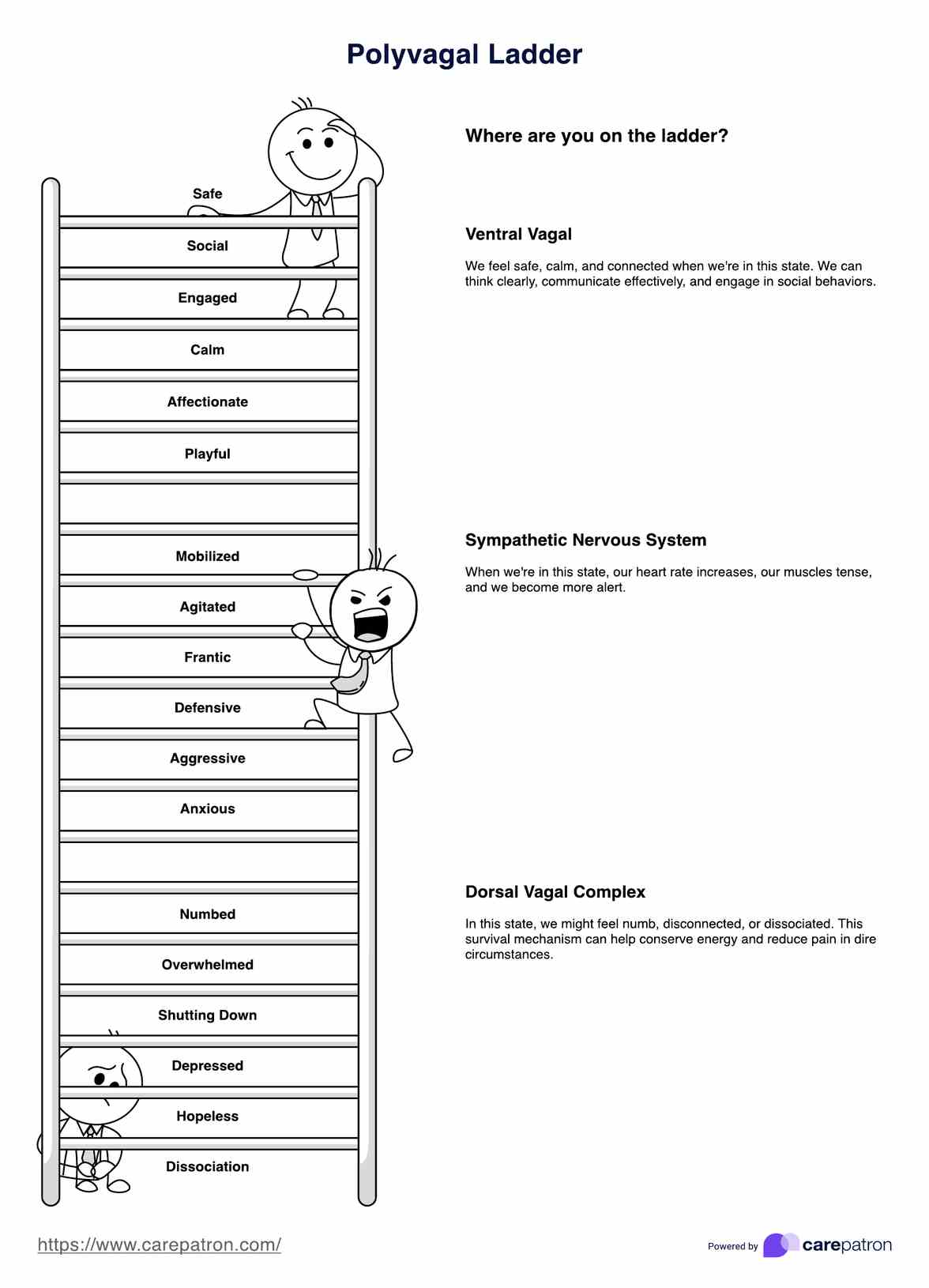It aids therapists and clients in identifying physiological states of distress, guiding them through strategies to achieve rest and a sense of safety and connection, thereby enhancing emotional regulation and trauma recovery.

Polyvagal Ladder
Explore the Polyvagal Ladder, a visual guide to understanding stress responses, promoting safety, and enhancing social engagement.
Use Template
Polyvagal Ladder Template
Commonly asked questions
Yes, individuals can apply the principles of the Polyvagal Ladder in daily life to manage stress, improve emotional awareness, and enhance social interactions and connections.
The Polyvagal Ladder facilitates emotional recovery by providing a roadmap for moving through different physiological states, from heightened arousal to relaxed, or shutdown to a place of safety and social engagement, which is crucial for healing from stress and trauma.
EHR and practice management software
Get started for free
*No credit card required
Free
$0/usd
Unlimited clients
Telehealth
1GB of storage
Client portal text
Automated billing and online payments











